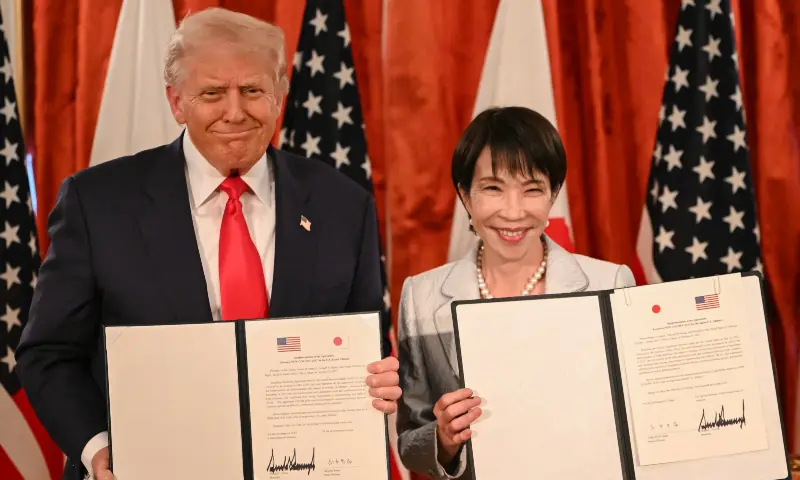US, Japan Sign Rare Earths Deal Ahead of Trump-Xi Meeting
October 28, 2025
In a significant move to strengthen supply chain security, US President Donald Trump and Japanese Prime Minister Sanae Takaichi signed a framework agreement on rare earths and critical minerals in Tokyo on Tuesday. The deal aims to reduce both nations’ reliance on China, which currently dominates global processing of rare earth elements essential for electronics, clean energy, and defense technologies.
The signing ceremony took place at the Akasaka State Guest House, where both leaders endorsed plans to boost joint investment and cooperation in rare earth exploration and processing. Though China was not directly mentioned, officials acknowledged that Beijing’s recent export restrictions have raised concerns about supply disruptions.
Strengthening Supply Chains
According to the White House, the agreement outlines steps to create “diversified, fair, and transparent markets” for critical minerals. The US and Japan will coordinate economic policy tools, provide financial support for select projects within six months, and explore a mutual stockpiling arrangement. Both nations will also seek partnerships with other countries to secure global supply chains.
China currently processes over 90% of the world’s rare earths, while the US and Myanmar account for 12% and 8% of extraction, respectively. Malaysia and Vietnam contribute another 4% and 1% of processing, according to Eurasia Group data.
Trump-Xi Meeting Ahead
The deal comes just days before Trump’s meeting with Chinese President Xi Jinping at the Asia-Pacific Economic Cooperation (APEC) summit in South Korea. The leaders are expected to discuss a possible agreement that could ease US tariffs and Chinese export controls on rare earths.
Japan’s Investment in US Energy
As part of a broader trade partnership, Japan has pledged a $550 billion investment in the US economy, targeting areas such as power generation and liquefied natural gas (LNG). The initiative aligns with Washington’s push to reduce global dependence on Russian energy exports amid sanctions on Rosneft and Lukoil following the Ukraine conflict.
Japan, which is gradually cutting ties with Russian energy suppliers, has ramped up LNG imports from the US and Alaska to ensure energy security. In June, JERA, Japan’s largest LNG buyer, signed long-term deals to purchase up to 5.5 million metric tons of US LNG annually starting in 2030 — equivalent to its imports from Russia’s Sakhalin-2 project.
Balancing Costs and Energy Security
While Japan continues to explore US energy partnerships, experts warn that distance and logistics could raise costs compared to Russian imports. Nobuo Tanaka, CEO of Tanaka Global Inc., noted that Sakhalin-2 remains Japan’s cheapest and closest LNG source.
“The question is whether US gas — from Alaska or the Gulf Coast — can compete on price and delivery speed,” Tanaka said.
As global energy dynamics evolve, the US-Japan rare earths and energy partnership marks a strategic step toward diversifying supply chains, enhancing economic security, and reducing dependence on geopolitical rivals.

